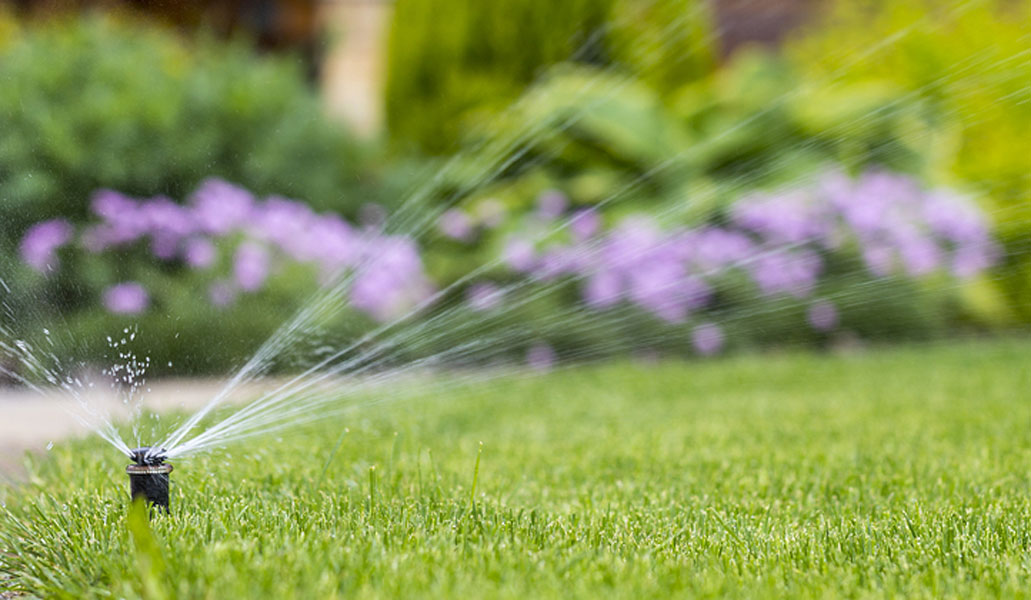Reduce the impacts of run-off and help your foliage thrive with smart irrigation strategies; watering plants, lawns, and gardens comprises around 30% of all water consumed in a typical household. It is further estimated that Americans use seven-billion gallons of water daily to water their greenspaces. Proper irrigation practices help prevent waste while fostering healthy, hardy plants.
Get smart about irrigation to conserve water and help your lawn thrive:
Adjust the Blade
Adjusting your mower blade can also help with drainage and overall irrigation; position the blade to clip a maximum of one-third total grass height each time you mow. This may require adjusting the mower blade, which a landscape professional can help with as needed.
Less is More
When it comes to watering your lawn and garden, less is more; don’t overwater. First, buy an inexpensive rain gauge to see how much water your plants receive naturally before flooding them with a hose or sprinkler. Overwatering can contribute to disease, weeds, and run-off issues; too much water can also foster root-rot and compromise your turf.
Time to Test
Take time to test- both your soil and your water. Visit your local municipality or cooperative-extension office to test your soil and determine what additives it needs to thrive. Talk to your local utility provider, or public works department, to obtain a water-testing kit to see exactly what is being fed to your plants and lawn. This impacts drainage and irrigation.
Know Your Soil
Do you know what kind of soil you have? Make sure to assess the texture to further determine how much water is needed to thrive. For example, some common findings in this region are dry, sandy soil and dense, clay-like soil. If your soil is sandy, it needs an inch of water twice weekly, while clay-like soil needs an inch of water once weekly. Infrequent watering helps to establish and build a strong root system, which creates a hardy lawn and garden.
Scrutinize the Sprinkler
When using a sprinkler system to water your lawn and garden, it may become necessary to calibrate and adjust sprinklers to ensure proper watering. Since all sprinklers are different, measure the water collected from your system by setting cans or jars in the path of your sprinkler and leave for an hour. You can then multiply the amount collected by how many hours your sprinkler system is on to deduce how much water your plants and lawn are receiving daily. Adjust the sprinkler settings to precisely water plants and facilitate proper irrigation.
Keep your yards and greenspaces near Charleston looking their best – and save money doing it—by irrigating smartly. Talk to the landscape professionals at Terra Bella Garden Center, and determine the best practices for your distinct property.


